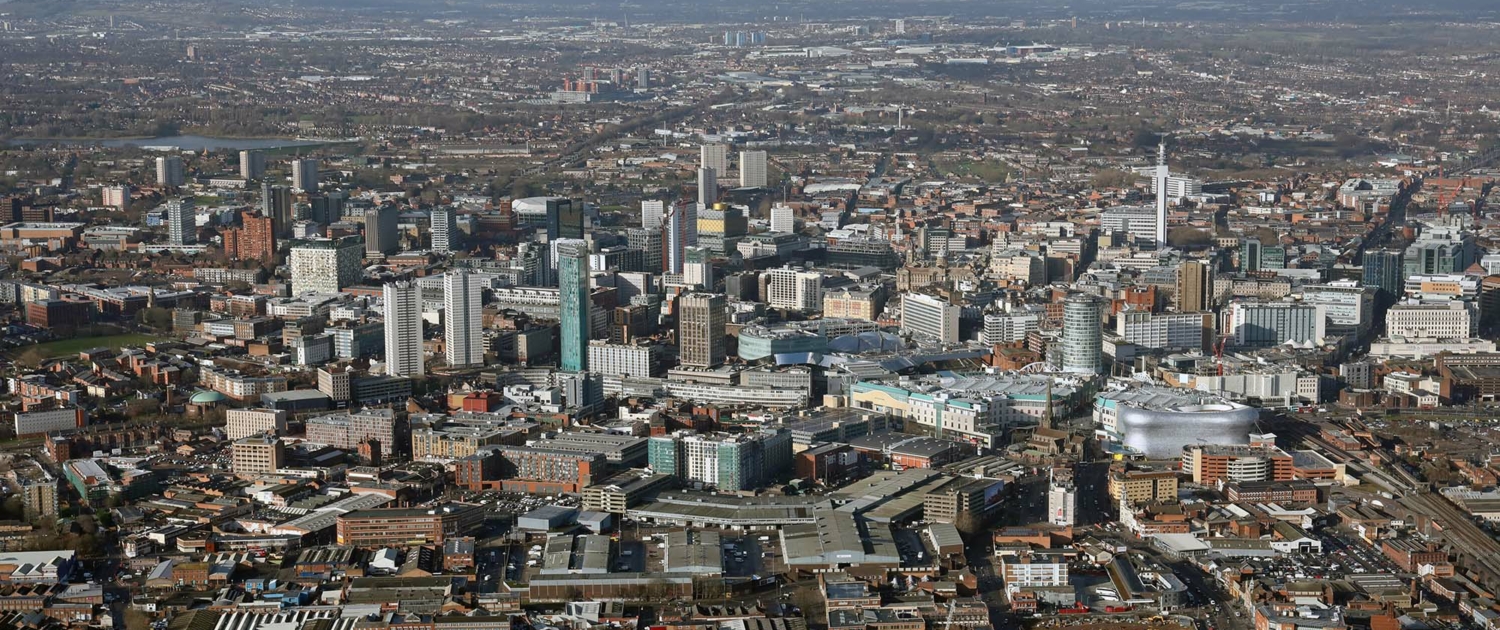Home > Geotopics > Birmingham > How have changes in Birmingham caused economic and population growth?
How have changes in Birmingham caused economic and population growth?
The rural-urban fringe
The eastern edge of Birmingham transitions into its rural-urban fringe, featuring a blend of urban and rural land uses. While some parts of this area still maintain agricultural operations, it also hosts Birmingham International Airport and the National Exhibition Centre. The zone’s other land uses encompass shopping, housing, golf courses, and farming.
Economic growth
Birmingham has seen a recent surge in economic growth driven by several factors:
- The attraction of Birmingham’s traditional metal manufacturing to Transnational Corporations (TNCs) like Ford and BMW and investment from major food companies such as Kraft.
- The city’s esteemed reputation for crafting high-value, low-bulk commodities, such as jewellery.
- Enhanced rail connections with south-east England and the expansion of Birmingham International Airport, offering links to Asia and the Middle East.
- The escalating significance of finance and business services companies within the city.
- The presence of a skilled labour force.
What makes Birmingham appealing for investment by Transnational Corporations (TNCs)?
- The presence of relatively inexpensive yet highly skilled labour.
- Availability of land on brownfield sites, previously occupied by factories or older houses, now demolished and cleared for development.
- The presence of government-supported enterprise zones and other incentivising measures.
Gentrification
Gentrification refers to transforming older, often deteriorated urban areas — typically near the city centre — into culturally appealing neighbourhoods that attract wealthier residents, thereby modifying the region. Moseley, a 19th-century suburb of Birmingham, is an example of this phenomenon. The area is characterised by numerous spacious homes initially constructed for entrepreneurs and factory owners. Post-World War II, many of these houses were subdivided into flats and bedsits, leading to the region becoming rundown. However, starting from the 1980s, the appeal of its tree-lined streets and Victorian houses revitalised Moseley, making it a sought-after residential area once again as many homes were refurbished. Additionally, Moseley’s strategic location adds to its attraction. It is only three miles from the city centre and two miles from the University of Birmingham and the Queen Elizabeth Hospital, attracting a diverse socio-economic mix.
Studentification
Studentification refers to the progressive socio-environmental transformation of a city area resulting from the influx of students and the conversion of older, often 19th-century houses into student apartments by partitioning large properties. Birmingham is home to three major universities – Birmingham University in Edgbaston, Aston University in Aston, and Birmingham City University in Perry Barr. The expansion of these institutions since 2000 has amplified the demand for this accommodation style. Additionally, services have evolved to meet the increased student expenditure on arts events, concerts, and performances.
The influx of students into areas such as Selly Oak has had various impacts, including:
- The social replacement and displacement of older residents by a younger, predominantly single demographic.
- A concentration of young individuals with shared cultures and lifestyles leads to changes in local shops and services.
- The physical enhancement or degradation of existing properties depends on the landlord-tenant relationship.
- Housing price inflation results in neighbourhoods dominated by privately rented accommodation and houses in multiple occupation.
- Increases in minor antisocial behaviour and declining owner-occupier levels lead to poorly maintained properties.
Related Topics
Use the images below to explore related GeoTopics.



